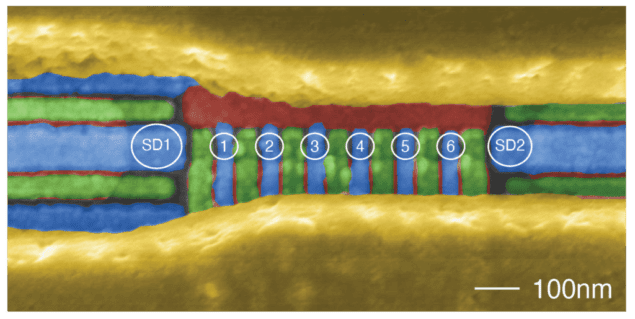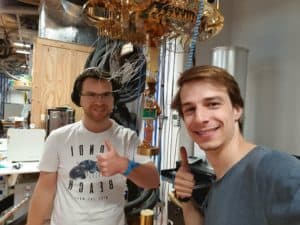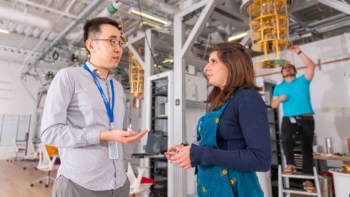
A team of researchers in the Netherlands has placed a record number of silicon spin qubits on a chip. By combining an advanced modular software stack, efficient calibration routines and reliable device fabrication, the researchers showed that they could operate the new six-qubit chip with high fidelity, clearing the way for even larger qubit numbers in silicon-based devices.
Although quantum computers have several advantages in principle over their classical counterparts, many of these advantages will only be realized when quantum computers can operate with at least a million qubits. Many promising qubit platforms exist, including superconducting qubits, trapped ions and photonic platforms, and researchers have so far demonstrated that they can control between a few dozen and a few hundred qubits, depending on the platform. In each case, though, one of the major factors preventing researchers from scaling up qubit numbers is that qubits can decohere (lose their quantum nature) and become subject to cross-talk from nearby qubits. Both processes affect the quality of the whole system.
Semiconductor qubits such as silicon spins hold an important high card in the qubit-platform game: they can be mass-produced like normal computer chips. This scalability makes them a promising candidate for building a large-scale quantum computer, and the high quality, or fidelity, of operations involving single silicon spin qubits or pairs of qubits (99.9%) is another advantage.
Operating larger numbers of silicon spin qubits at such a high fidelity, however, has proven difficult because the electron spin is very delicate. This means that while various qubit processes (including initialization and readout) have been demonstrated individually at high fidelity, combining them has meant sacrificing the fidelity of the complete process.
To the next level
The new silicon chip built by researchers at QuTech (a collaboration between the Delft University of Technology and TNO) overcomes some of these earlier challenges. As well as holding a record number of six spin qubits placed in a linear quantum dot array, the chip also incorporates two sensing quantum dots for individual as well as universal control and read-out. In addition, the researchers apply a set of protocols aimed at maintaining high fidelity, such as automated calibration routines and a software program for post-selection signal processing to reduce errors.

What further sets this result apart from previous attempts is that the process of qubit initialization – that is, placing all the qubits in their desired starting state – combines measurements of the spin state with real-time feedback. This scheme has the benefit of not relying on a much slower process called thermalization, in which the qubits are “reset” by placing them in their ground state. On top of this, each spin qubit operates with a single electron and does not require access to electron “reservoirs” to bring in fresh ones. This makes their operations faster, meaning that operations can be completed before decoherence kicks in.
The researchers proved the high quality of their device by demonstrating 99.9% fidelity in operations involving single-qubit gates. The corresponding two-qubit gate fidelities were indicated by preparing special quantum states known as Bell states with 89–95% fidelity across the array – a result that clearly showed the effect of the team’s advanced protocols.
Next step: simultaneous operations
Lead researcher Lieven Vandersypen, who co-authored a paper in Nature outlining the work, says that the team’s next step will be to perform simultaneous operations on the qubits, which will allow more operations to take place before the effects of decoherence become too large. He also plans to execute quantum algorithms on the processor, and the team is already working on quantum dot arrays in two dimensions, as well as methods to connect two quantum dot arrays via an on-chip quantum link.
Silicon spin qubits manufactured on an industrial scale
Silvano de Franceschi, a researcher at CEA in Grenoble, France who was not involved in this work, calls it “pretty solid and convincing”. He adds that realizing a six-qubit register is an important step towards scaling up qubit numbers in silicon, and says that the researchers’ protocols were instrumental in achieving high fidelities for one- and two-qubit operations. However, he also points out that performing such operations in an elementary two-qubit system is not the same as doing so in a qubit array, as the latter is “technically way more demanding”. Finally, he notes that the research brings to light important issues such as the need to understand and compensate for heating effects associated with the operation of a spin-qubit array.



